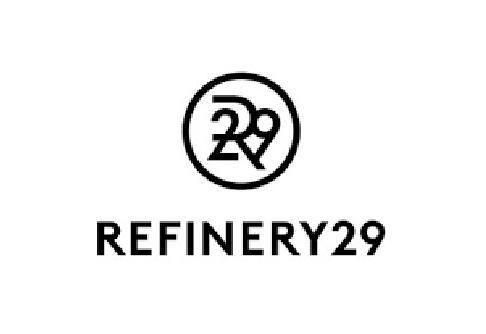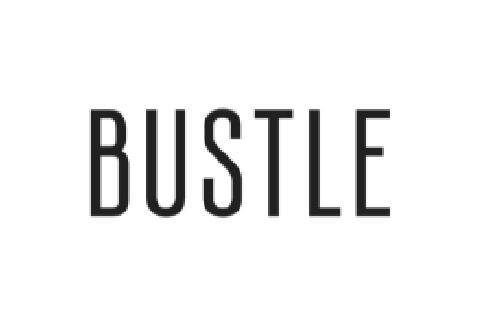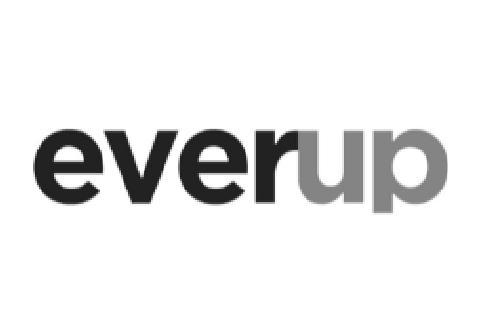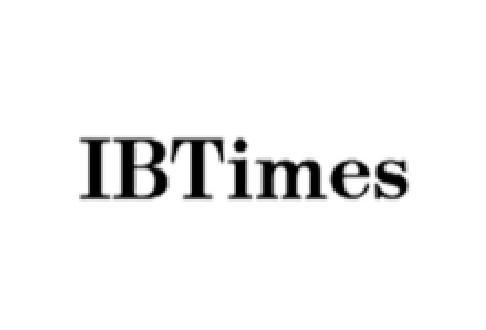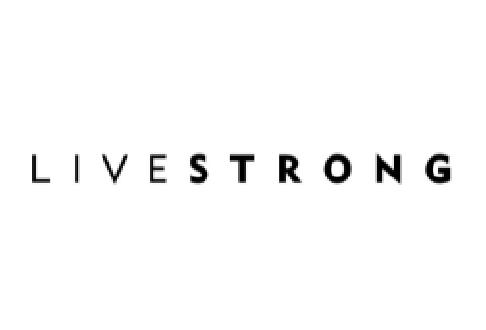Taking Action: Breaking Free from the Consumption Trap
Table of Contents
- Taking Action: Breaking Free from the Consumption Trap
- Introduction: The Consumption Trap
- Why We Feel Stuck in the Age of Social Media
- Why We Fall Into the Consumption Loop
- The Mindset Shift: From Consumer to Creator
- Taking Active Action: Practical Steps
- Why Taking Action Feels Uncomfortable (And Why That’s Okay)
- Strategies for Pushing Through Hesitation
- Real-Life Examples of Embracing Discomfort
- The Ripple Effect of Active Action
- The Compounding Benefits of Consistent Action
- The Domino Effect on Other Areas of Life
- Common Pitfalls and How to Overcome Them
- Staying Motivated When Progress Feels Slow
- Conclusion: Choose Creation Over Consumption
Introduction: The Consumption Trap
In today’s world, we’re constantly surrounded by information. From social media feeds to podcasts, webinars, and online courses, there’s always something to consume. While learning and staying informed are important, it’s easy to fall into the trap of passive consumption—where we spend more time absorbing information than taking meaningful steps forward. This can leave us feeling stuck, unfulfilled, and even overwhelmed. We might convince ourselves that we’re preparing for action, but in reality, we’re stuck in a cycle of overconsumption.
The problem? Creating the life you truly love requires more than just soaking up information—it demands active, intentional steps. Breaking free from the consumption trap means turning knowledge into action.

Why We Feel Stuck in the Age of Social Media
We’ve all been there—another evening spent scrolling through social media, hoping to find inspiration or clarity, only to feel more disconnected from ourselves and our goals. The endless stream of images, stories, and ideas can create a false sense of productivity. It feels like we’re gathering information and making progress, but in reality, we’re stuck in a loop that keeps us from moving forward.
Social media, in particular, has a sneaky way of making us feel like we’re doing something when we’re not. We may feel a burst of excitement or motivation when we see someone else’s success or hear about their journey. But when the screen darkens, we’re left with the same challenges we started with—only now, we’re overwhelmed by the sheer volume of content we’ve consumed. Instead of motivating us, this constant input can leave us feeling drained, unfocused, and even paralyzed by the pressure to measure up to others.
Taking action can feel daunting, especially when we’ve spent so much time in this passive state. But the truth is, action is the only thing that can bridge the gap between where you are now and where you want to be. It’s not enough to dream about a better future; you need to take steps toward it.
Why We Fall Into the Consumption Loop
It’s easy to fall into the consumption loop because it tricks us into believing we’re making progress. Every time we scroll through social media, binge-watch a show, or devour a self-help book without applying what we’ve learned, we get a small sense of accomplishment. It feels like we’re engaging with something important, moving closer to our goals. But in reality, we’re only delaying the real work—taking action.
Psychologically, this cycle is powered by dopamine—the brain’s reward chemical. Every time we consume something new, whether it’s a post, a video, or an article, we get a quick dopamine hit. It’s that fleeting burst of satisfaction that keeps us coming back for more. The problem is that this satisfaction is temporary, and it doesn’t translate into real-world results. We can spend hours absorbing content, but without action, nothing changes.
This loop becomes a form of procrastination. Instead of taking that uncertain step toward our goals, we convince ourselves that consuming more information is necessary preparation. “I’ll start tomorrow, but first I need to learn just one more thing,” we tell ourselves. But tomorrow becomes next week, then next month, and before we know it, we’re stuck in the same place, frustrated with our lack of progress.
Real-life examples of this are everywhere. Take someone who dreams of starting their own business. They spend countless hours researching, reading success stories, and watching how-to videos. They convince themselves that they’re getting closer to launching their business, but they never take the next step. The business remains a distant dream, trapped in the consumption loop.
Or consider a person who wants to get in shape. They follow fitness influencers on Instagram, buy workout programs, and read up on the best diets. But when it comes to actually getting up and moving, they put it off, stuck in a cycle of gathering information without taking action.
This consumption loop gives us a sense of comfort and control. It feels safe. But in reality, it keeps us from facing the discomfort of real action—the kind that brings true growth and fulfillment.
The Mindset Shift: From Consumer to Creator
The key to breaking free from the consumption trap is shifting your mindset from being a passive consumer to an active creator. This shift is a game-changer. Instead of spending time reacting to what others are doing or saying, you start focusing on what you can create, build, and contribute to the world. It’s about reclaiming your time and energy, and redirecting it toward actions that move you closer to your goals.
Being a consumer is reactive. You’re scrolling, watching, or reading, responding to what’s placed in front of you. You feel like you’re absorbing valuable information, but in reality, you’re just responding to external stimuli. On the other hand, being a creator is proactive. It means you’re the one deciding what needs to be done, taking the necessary steps, and actively shaping the path forward.
Think of the difference like this: A reactive person waits for the right moment, consuming more information and letting external factors dictate their actions. A proactive person decides, “I’m going to create my own path,” and takes action, even when it’s uncertain or imperfect.
Consider the story of Amanda, a freelance writer who used to spend hours reading other writers’ blogs, hoping to find the inspiration to start her own. She told herself that by consuming all this content, she was preparing herself to take action. But after months of waiting for the “perfect time,” she realized she was stuck. It wasn’t until she shifted her mindset—moving from passive consumption to actively creating her own blog—that things changed. She started writing every day, publishing posts, and eventually built a successful writing career. The difference came from deciding to stop reacting to others’ content and start creating her own.
Another example is Mark, an aspiring entrepreneur who dreamed of launching a tech startup. For years, he followed industry leaders, attended conferences, and devoured every piece of advice he could find. But his startup remained a distant dream. Once Mark made the mental shift from consumer to creator, he started building his prototype and launched his business. Instead of waiting for more information, he took action and learned as he went. That shift transformed him from someone who was passively learning to someone actively building his future.
The truth is, consuming will never be as satisfying or impactful as creating. When you make that shift, you begin to see your potential unfold. It’s no longer about what others are doing—it’s about what you are building, and that’s where real growth happens.
Taking Active Action: Practical Steps
Now that you understand the importance of shifting from consumer to creator, it’s time to put that mindset into action. The good news is that taking active steps toward your goals doesn’t have to be overwhelming. In fact, breaking the cycle of passive consumption starts with small, intentional changes. Here are four practical steps to help you move from consuming to creating.
Step 1: Identify Your Consumption Habits
The first step to taking action is understanding where your time and energy are being drained. Take a hard look at how much of your day is spent consuming—whether it’s scrolling through social media, binge-watching shows, or even endlessly reading articles without putting that knowledge to use. Track your habits for a few days and notice the patterns. Are you filling gaps of time with mindless scrolling? Are you using learning as a way to avoid taking action? Awareness is the first step in reclaiming your time.
Step 2: Set Clear Goals
Once you’ve identified your consumption habits, the next step is to get clear about what kind of life you want to create. What are your goals, both big and small? Whether it’s starting a business, improving your health, or working on personal growth, defining these goals gives you something tangible to work toward. Vague desires lead to vague outcomes, so take the time to paint a clear picture of the life you want. Once you know where you’re headed, it becomes much easier to prioritize actions that bring you closer to that vision.
Step 3: Break Down Actionable Steps
Big goals can feel daunting, which is why it’s essential to break them down into smaller, manageable steps. Identify the actions you can take on a daily or weekly basis that align with your larger goals. For example, if your goal is to start a side hustle, begin by setting aside an hour each day to research the industry, build a website, or connect with potential clients. If your goal is to improve your health, start with 10-minute daily workouts or meal prep sessions. Small, consistent actions lead to significant progress over time. The key is to focus on taking action, even if it feels imperfect.
Step 4: Create More, Consume Less
To truly break free from the consumption trap, you need to shift your daily habits from consuming to creating. Instead of filling downtime with social media or TV, focus on activities that move you closer to your goals. This could mean starting a blog, launching a side business, practicing a new skill, or working on a personal project. The idea is to replace passive consumption with active creation. You’ll be surprised at how much time you free up when you consciously choose to create rather than consume.
By implementing these steps, you’ll find yourself building momentum and moving toward the life you’ve envisioned. The shift from passive consumption to active creation may take time, but with each small action, you’re breaking the cycle and reclaiming your ability to shape your future.
Why Taking Action Feels Uncomfortable (And Why That’s Okay)
Taking action often feels uncomfortable, and that’s completely normal. Anytime we step out of our familiar routines and start working toward a goal, we’re met with uncertainty, fear, and even self-doubt. This discomfort can make us hesitate, leading us back to the safety of passive consumption. But here’s the truth: discomfort is a sign that you’re growing. It’s part of the process, and learning to embrace it is key to making progress.
One reason taking action feels uncomfortable is the fear of failure. We worry about what might go wrong, whether we’re good enough, or if we’ll fall short of our goals. This fear can be paralyzing, but it’s important to remember that action doesn’t have to be perfect. The goal is progress, not perfection. As you begin to take small steps, you’ll find that the fear starts to fade, replaced by a sense of accomplishment and forward momentum.
Strategies for Pushing Through Hesitation
- Focus on Small Wins – Start small. Each time you take a step, no matter how minor, you’re building confidence. A small win could be as simple as finishing one task, making one decision, or taking one bold step forward. Over time, these small victories add up and build the confidence to tackle larger challenges.
- Celebrate Progress – It’s easy to fixate on how far you still have to go, but it’s crucial to celebrate how far you’ve come. Acknowledging your progress helps maintain motivation and keeps you moving forward. Reward yourself for each milestone, no matter how small.
- Seek Accountability – Find someone who will keep you accountable, whether it’s a friend, mentor, or coach. Sharing your goals with others creates a sense of responsibility. They can offer encouragement, help you stay on track, and remind you why you started in the first place.

Real-Life Examples of Embracing Discomfort
Look at someone like Maria, who wanted to improve her public speaking skills. Initially, the thought of speaking in front of an audience terrified her. But she decided to embrace that discomfort, starting by practicing in front of small, supportive groups. As she gained confidence, her fear lessened, and she went on to become a keynote speaker at major events. The discomfort didn’t disappear overnight, but her willingness to face it helped her unlock new opportunities.
Another example is Ethan, who felt stuck in his job but was too afraid to take the leap into a new career. He was worried about leaving the security of his current role. After years of hesitation, he finally took small steps—attending networking events and enrolling in online courses to build the skills he needed. Slowly but surely, he transitioned to a fulfilling career in a new field. The discomfort was part of the journey, but by facing it head-on, he opened doors he didn’t think were possible.
The Ripple Effect of Active Action
Once you begin taking consistent action, something incredible happens—the benefits start to multiply. What might feel like small, incremental progress at first quickly turns into a wave of positive change. This is the ripple effect of active action.
Each action builds on the one before it, creating momentum. As you start to see results in one area, your confidence grows, and that energy spills over into other parts of your life. For example, taking action to improve your career can lead to a boost in self-esteem, which in turn can improve your relationships. Or making small changes in your health routine can give you the mental clarity and energy to pursue personal goals you’ve been putting off.
The Compounding Benefits of Consistent Action
- Increased Confidence – Every time you take a step, no matter how small, you reinforce your ability to make things happen. This growing confidence makes it easier to take on bigger challenges in the future.
- Building Momentum – Once you start seeing progress, it’s easier to keep going. Each action propels you toward the next, creating a snowball effect. What once seemed difficult becomes second nature as you build the habits necessary for long-term success.
- Fulfillment – The more action you take, the more aligned you feel with your goals and values. This leads to a deeper sense of fulfillment because you’re actively creating the life you want rather than passively consuming someone else’s version of success.
The Domino Effect on Other Areas of Life
Action in one area of life has a ripple effect that often improves other areas as well. For instance, someone who starts taking action in their career—like setting clear goals or pursuing a passion project—might find that their personal relationships also improve. The confidence gained from career success can spill over into how they show up in their friendships or family dynamics. Similarly, someone who begins focusing on personal development, like cultivating a positive mindset, may find that their work performance improves because they’re more resilient and focused.
The beauty of active action is that it’s self-reinforcing. Each step forward opens new doors, boosts your confidence, and encourages you to take the next step. Before long, you’re not just dreaming about the life you want—you’re living it.
Common Pitfalls and How to Overcome Them
Even with the best intentions, it’s easy to fall back into passive consumption. Setbacks are part of the process, but recognizing and overcoming them is key to staying on track. Here are some common pitfalls and how to push through them:
1. Perfectionism
Perfectionism is one of the biggest barriers to taking action. Many people delay starting because they want everything to be perfect from the get-go. The fear of not doing something “right” holds them back, keeping them stuck in the cycle of overthinking and avoiding action. But the truth is, that perfection doesn’t exist, and waiting for the perfect moment will only delay progress.
How to Overcome It:
Embrace the idea of “done is better than perfect.” Start with small, imperfect actions and allow yourself the space to learn and grow as you go. Progress comes from consistent effort, not from getting everything right the first time. Remember, you can always refine and improve later, but nothing changes if you don’t start.
2. Fear of Failure
Fear of failure can feel paralyzing, making you avoid taking risks or stepping outside of your comfort zone. The idea of failing, especially publicly, can make the thought of trying something new seem too daunting. But failure is a natural part of growth, and every successful person has experienced it along the way.
How to Overcome It:
Shift your perspective on failure. Instead of seeing it as a negative outcome, view it as a learning opportunity. Each failure brings valuable lessons that help you refine your approach and get closer to your goal. Start small, take manageable risks, and recognize that every step—whether successful or not—is progress.
3. Distractions
In today’s digital world, distractions are everywhere. Social media, emails, notifications, and other demands on your time can easily pull you back into passive consumption. It’s easy to lose focus and forget the goals you set out to achieve.
How to Overcome It:
Set boundaries around your time and environment. Limit distractions by scheduling specific times for focused work and creating a space free from interruptions. Use tools like time-blocking or the Pomodoro Technique to stay on track. More importantly, keep your goals visible—write them down, post them somewhere you can see daily, and remind yourself why you started.
Staying Motivated When Progress Feels Slow
Progress doesn’t always happen as quickly as we’d like. When results aren’t immediate, it’s easy to lose motivation and slip back into old habits. The key is to stay committed even when the rewards aren’t visible yet.
How to Stay Motivated:
- Celebrate Small Wins: Focus on the progress you are making, no matter how small. Every step forward counts, and recognizing these achievements helps sustain your motivation.
- Track Your Progress: Use a journal, an app, or any tool that allows you to track your actions and milestones. Seeing your growth, even in small increments, provides a sense of accomplishment.
- Revisit Your Why: When progress feels slow, remind yourself why you started. Reconnect with the bigger picture and the vision you’re working toward. This can reignite your passion and keep you moving forward.
Conclusion: Choose Creation Over Consumption
At the end of the day, the choice between passive consumption and active creation is yours. The life you want isn’t going to be built by endlessly scrolling through social media or waiting for the perfect moment. It will be built by taking action, even when it’s uncomfortable or imperfect.
The shift from consumer to creator is transformative. It requires intention, persistence, and courage, but the rewards—greater confidence, fulfillment, and the life you’ve envisioned—are worth every bit of effort.
Start small. What is one action you can take today that moves you closer to your goal? Maybe it’s writing that first page, reaching out to a mentor, or simply setting aside time to work on your dream project.
Ready to Start Taking Action?
Don’t let another day slip by in passive consumption. It’s time to take control, step into your power, and create the life you’ve always envisioned. Whether it’s a personal goal, a professional aspiration, or something in between, you can make it happen—one small step at a time.
What will you create today? Let’s get started! Schedule a free consultation with our coaching team to explore how we can help you turn your goals into reality.
If you are ready to create a fulfilling career making real impact, watch our FREE introductory webinar to get started.













